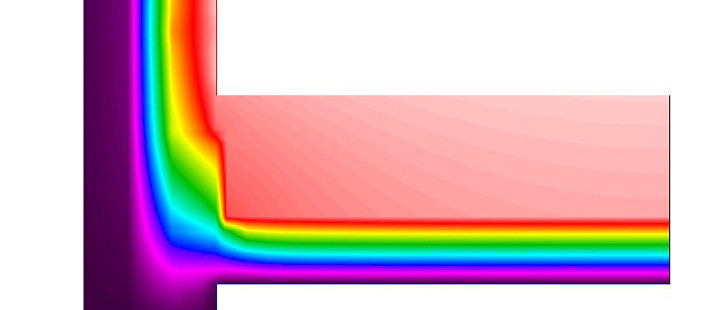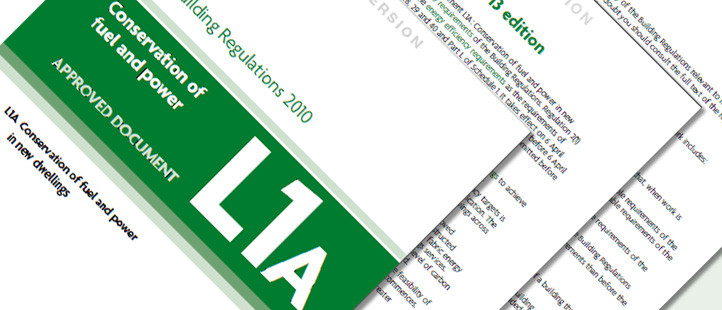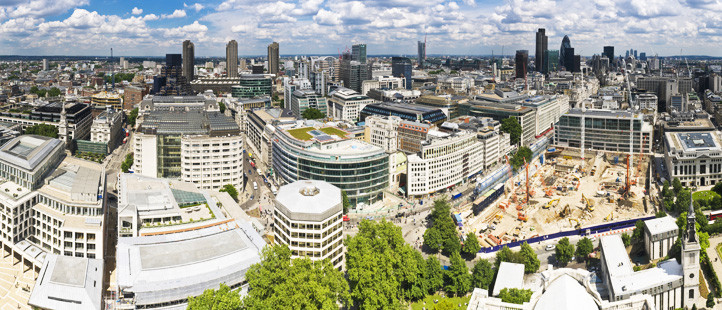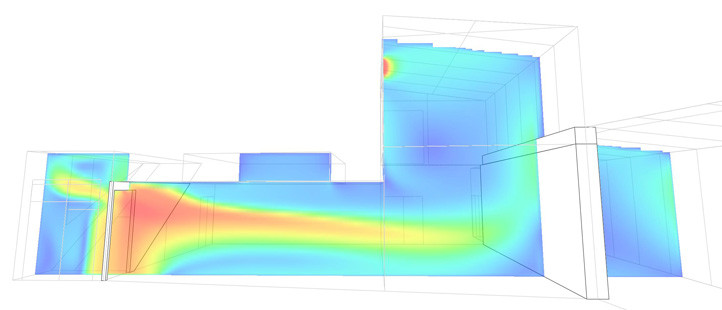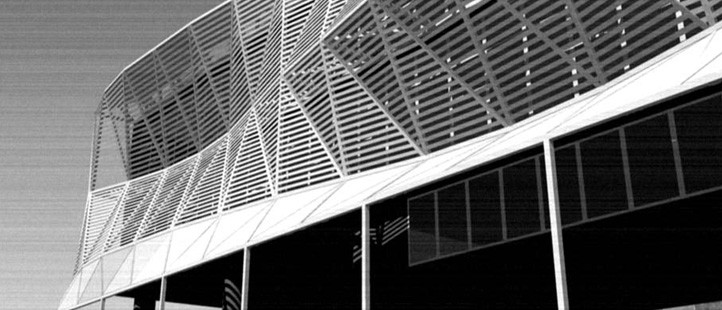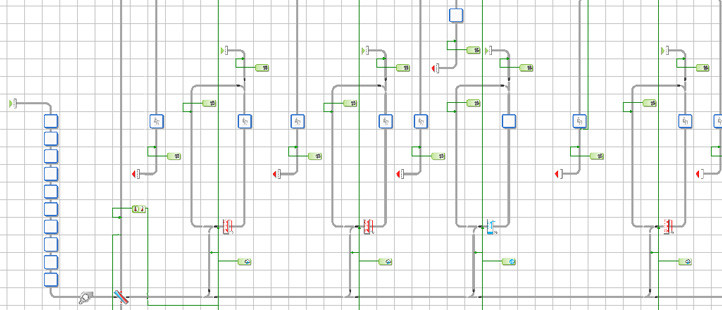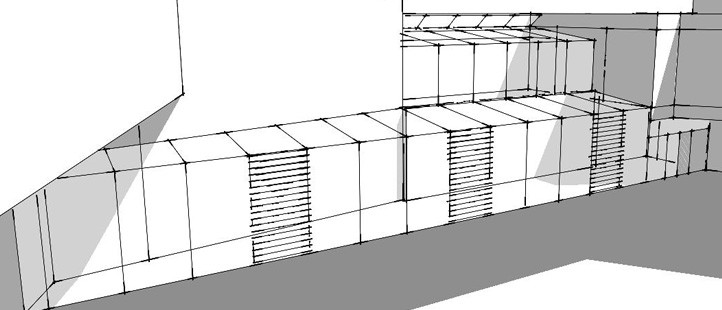Non-Repeating Thermal Bridging Psi-Value Calculations Using THERM
Non-Repeating Thermal Bridging Psi-Value Calculations Using THERM
A ‘thermal bridge’ is an element within the insulation envelope which provides a lower level of thermal resistance than the insulation material which forms the majority of the construction element. A good example is a cavity tie – where, due to the higher level of thermal conductivity -more heat loss occurs per unit of area where ties are present, compared to where they are not.
Thermal bridging can be grouped into two separate types; repeating thermal bridging and non-repeating thermal bridging.
A repeating thermal bridge includes repeating occurrences of a thermal bridge within the construction fabric –such as the brick tie example described above. This type of bridging can be aggregated and included within the calculated ‘U-Value’ for the construction element.
A non-repeating bridge however, as the name suggests, accounts for thermal bridging through occurrences which do not repeat – such as construction element junctions; a wall-to-floor junction for example.
For this type of thermal bridge, the thermal bridging magnitude is referred to as a ‘Psi-Value’, in the units W/m. The Psi-Value represents the additional heat losses which occur through a construction junction compared to if the junction where not there and the wall met the floor with no additional losses.
The Psi-Value is shown in units of Watts per metre length of the junction.
For construction junctions which maintain the continuity of insulation through the junction with no compromise, the Psi-Value can be zero, or even negative. For construction junctions where the continuity of insulation is interrupted by higher thermal conductivity load bearing elements etc; the Psi-Value is higher.
The avoidance of thermal bridging becomes more critical as insulation within construction elements increases. For Passivhaus buildings, thermal-bridge free detailing is essential. For dwellings built to current Part L1A standards, the calculation of well performing construction details is becoming of increasing importance and can offer significant cost savings when incorporated into the Part L1A ‘SAP’ assessment.
Greenlite offer services to calculate non-repeating thermal bridging ‘psi-values’ using THERM two-dimensional building heat transfer modelling software.
- Region: Europe
- Country: United Kingdom
- {{ error }}
- Request sent successfully.

